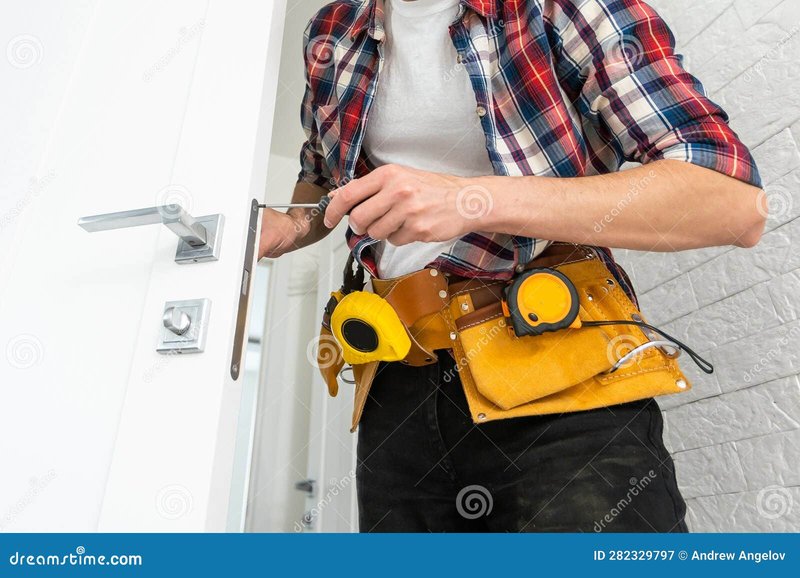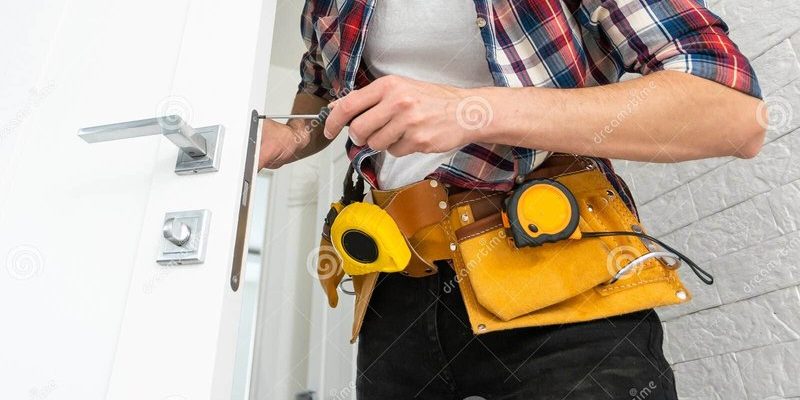
Imagine your door hardware as the unsung heroes of your home. They keep everything secure, provide privacy, and even contribute to your home’s overall aesthetic. After decades of use, though, they might need a little TLC (that’s tender loving care). Whether it’s a squeaky hinge that sounds like it’s auditioning for a horror movie or a doorknob that sticks like it’s stuck in a time warp, I’m here to guide you through the process of getting your door hardware back into tip-top shape.
Understanding the Types of Interior Door Hardware
Before you dive into repairs, it’s essential to know the different types of interior door hardware. Generally, you’ll find three main components: doorknobs, hinges, and locks.
– Doorknobs: These can be round, lever-style, or even keyless. Each type has its own mechanism, but they all tend to develop issues like being loose or not turning smoothly.
– Hinges: Often overlooked, these little guys bear the weight of the door. If they’re rusty or squeaky, your door might not close properly, or it might make annoying sounds that disrupt your peace.
– Locks: Whether it’s a simple latch or a more complex deadbolt, locks are crucial for security. Over time, they can jam or become less effective, leaving you feeling vulnerable.
Understanding these components will help you identify what needs repair, so you can take aim at the right target.
Gathering Your Tools and Supplies
Before starting any repair, it’s essential to have the right tools on hand. Here’s a handy list of what you might need:
- Screwdriver: Either a flat-head or Phillips, depending on your screws.
- Hammer: Useful for light taps if something is stubborn.
- Lubricant: A spray or grease can really help with hinges and locks.
- Replacement parts: If something is too worn, you might need new hardware.
- Cleaning supplies: A cloth and cleaner can help with dust or grime.
Having these tools will make your repair process smoother. You can find most of them at your local hardware store for a reasonable price. Honestly, spending a little bit upfront can save you both time and money in the long run.
Step-by-Step: Repairing Squeaky Hinges
Squeaky hinges are like that friend who can’t stop talking. They demand attention! Here’s how to get them quiet again:
1. Remove the Hinge Pin: Start by using your screwdriver to remove the screws holding the hinge to the door or frame. Gently tap the hinge pin up with a hammer if it’s stuck.
2. Clean the Hinge: Wipe off any dirt or grease using a cloth. If there’s rust, use some sandpaper to get it smooth again.
3. Lubricate: Apply a few drops of your lubricant to the hinge and pin. This will help things move smoothly again.
4. Reassemble: Put the hinge back together in the reverse order. Make sure it’s snug but not too tight.
Your door will thank you with a soft, smooth pivot instead of an annoying creak!
Fixing a Loose Doorknob
Nothing’s more frustrating than a doorknob that spins but doesn’t actually pull the door open. Here’s how you can tackle that:
1. Tighten the Screws: Often, the screws are just loose. Look under the knob and tighten them with your screwdriver.
2. Check for Damage: If tightening doesn’t solve the issue, remove the doorknob entirely. Inspect it for any cracks or wear.
3. Replace If Needed: If it looks damaged, it might be time to replace the doorknob. Visit your local store and ask for help choosing the right one.
4. Reassemble: Attach the new or fixed doorknob and make sure it turns smoothly.
A secure doorknob feels good—like a firm handshake when you enter.
Tackling Sticking Locks
Sticking locks can feel like a bad magic trick. You’ve got to turn the key just right, and even then, it might not work! Here’s how to get it operating smoothly:
1. Clean the Lock: Dust and debris can clog up the lock’s mechanism. Use a can of compressed air to blow it out.
2. Lubricate: Just like with hinges, a little lubricant goes a long way. Insert your key, give it a few turns while applying a drop or two of lubricant into the keyhole.
3. Test It: Insert the key and turn it several times. You should feel a smoother action. If not, consider replacing the lock.
4. Replace if Necessary: If the lock is still sticking after cleaning and lubricating, you may need to remove it and get a new one.
Making sure your locks work well is essential for your safety and peace of mind.
When to Call in a Professional
While many repairs can be done at home, sometimes you just need a professional. If you encounter any of these situations, it might be time to pick up the phone:
– Severe Damage: If the hardware is significantly damaged or rusted, it might be beyond DIY repair.
– Electrical Locks: If you have electronic locks, they can be tricky. It’s better to have someone who knows their stuff handle it.
– Persistent Problems: If you’ve tried fixing it, and it still doesn’t work, don’t hesitate to call an expert. Sometimes, troubleshooting is more complex than it seems.
Understanding your limits can save you time and potential headaches.
Final Thoughts on Door Hardware Repair
Repairing interior door hardware that’s seen decades of use may seem like a daunting task, but it can be quite fulfilling. With the right tools and a bit of patience, you can tackle most issues yourself. Think of the satisfaction you’ll feel when those doors move smoothly, quietly, and securely once again.
Next time you find yourself facing a stubborn doorknob or a squeaky hinge, remember, you’ve got this! A little maintenance can go a long way in keeping your home safe and comfortable. Happy fixing!
